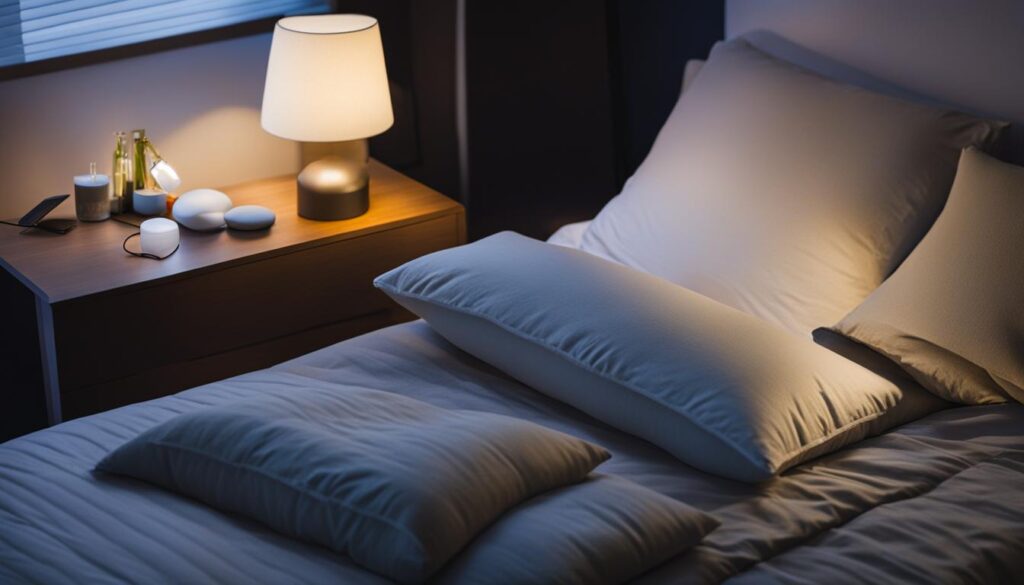
Sleeping with a sway back can be challenging, especially when it comes to finding a comfortable position that doesn’t exacerbate lower back pain and morning stiffness. According to experts, it is important to avoid stomach sleeping as it places excessive stress on the neck and lower back. Side sleeping with a pillow between the knees can help keep the pelvis in a neutral position. For those who prefer sleeping on their back, placing a pillow under the knees can reduce morning lower back pain and promote a more comfortable sleep. Additionally, performing morning mobility exercises like knees to chest and knees side-to-side can help minimize lower back stiffness and improve overall sleep quality.
The Impact of Sleeping Positions on Sway Back Posture
Sway back posture, characterized by an extended lower back, forward head posture, and tilted neck, can have a significant impact on sleeping positions. When sleeping on the stomach, the lower back is often extended, which can further worsen the sway back posture. The hips may also be extended, especially on softer mattresses. This posture can lead to discomfort and potential hip issues. Additionally, sleeping on the stomach can cause the feet to turn outwards and the head to favor one side, resulting in neck and postural imbalances. Understanding the connection between sleep positioning and sway back posture can help individuals make more informed decisions about their sleeping positions.
One of the key considerations for individuals with sway back posture is the alignment of the lower back during sleep. Sleeping on the back can be a suitable option as it allows for a more neutral spine alignment. Placing a pillow under the knees can help support the lower back and reduce morning stiffness. Side sleeping with a pillow between the knees can also promote a neutral pelvis alignment and alleviate lower back pain. By avoiding stomach sleeping, individuals with sway back posture can minimize the extension of the lower back and improve their overall sleep quality.
In addition to the lower back, it is important to pay attention to the position of the head and neck during sleep. Using a supportive pillow that keeps the head in a neutral position can help prevent the exacerbation of forward head posture. A pillow with proper neck support can help maintain a more aligned and comfortable sleeping position, reducing strain on the neck and upper back. Furthermore, being mindful of the positioning of the feet and knees can also contribute to a better sleep experience with sway back posture. Keeping the feet in a neutral position and avoiding excessive rotation can help maintain overall postural alignment during sleep.
| Sleeping Position | Advantages | Disadvantages |
|---|---|---|
| Back Sleeping | – Promotes neutral spine alignment – Reduces lower back pain – Minimizes morning stiffness |
– Can lead to snoring – May worsen sleep apnea – Requires proper pillow support for head and knees |
| Side Sleeping | – Supports neutral pelvis alignment – Reduces lower back pain – Minimizes pressure on shoulders |
– Can cause shoulder pain and discomfort – May lead to jaw and facial wrinkles – Requires a pillow between knees for optimal alignment |
| Stomach Sleeping | – None | – Exacerbates sway back posture – Can lead to neck and back pain – Puts strain on the lower back |
Tips for a Better Sleep with Sway Back
When dealing with sway back, achieving a better sleep experience is crucial for reducing lower back pain and promoting overall well-being. Here are some tips to help you improve your sleep:
Avoid stomach sleeping: Stomach sleeping can strain the neck and lower back, exacerbating the discomfort associated with sway back. Instead, try sleeping on your side or back to maintain a more neutral spine alignment.
Side sleeping with a pillow: If you prefer side sleeping, placing a pillow between your knees can help keep your pelvis aligned and reduce stress on the lower back. This simple technique promotes a more comfortable sleep and helps alleviate lower back pain.
Pillow under the knees: For those who find back sleeping more comfortable, placing a pillow under the knees can help maintain a neutral spine position. This not only reduces morning lower back pain but also ensures a more restful sleep experience.
Morning mobility exercises: Incorporating morning mobility exercises into your routine can play a significant role in minimizing lower back stiffness. Knees to chest and knees side-to-side exercises can help loosen up the muscles, improve flexibility, and enhance overall sleep quality.
By following these tips and implementing proper sleep practices, individuals with sway back can enjoy a better sleep, reduce lower back pain, and achieve a more neutral spine alignment. Prioritizing sleep quality is essential for optimal well-being and overall health.
- How to Turn off Deep Sleep Mode on Brother Printer Mfc-l2707dw? - October 25, 2023
- How to Tell if Your Girlfriend Used to Sleep Around? - October 25, 2023
- How to Get My Cat to Sleep? - October 25, 2023
